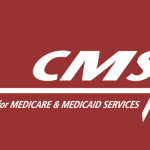The market for Minnesotans who buy their health insurance outside of employer groups isn’t working smoothly, a top insurance company official said Wednesday, pointing to big proposed rate increases for 2016.
The federal Affordable Care Act is bringing a series of changes to the non-group market, and the health law is working to provide subsidies that help many individuals purchase policies, said Mary Brainerd, the chief executive at Bloomington-based HealthPartners, during the nonprofit group’s annual meeting in St. Paul.
But affordability problems persist, and a fix for the state’s individual market is one of three policy priorities at HealthPartners, Brainerd said in comments before a crowd of about 500 people.
The insurer also is sounding alarm over rising prices for specialty pharmaceuticals, Brainerd said, and taking steps to reduce the amount of sugary soft drinks sold at its hospitals.
“Affordability is still one of the most critical issues that we face,” Brainerd said. “Some legislative changes are needed at both the state and federal level, particularly to make sure that the market for individuals who are buying coverage for themselves and their families — that that market works.”
With more than 22,000 employees, HealthPartners is one of the state’s largest health insurers. The nonprofit also operates a large network of hospitals and clinics that stretches from the Twin Cities to western Wisconsin, including Regions Hospital in St. Paul and the Park Nicollet health system, which is based in St. Louis Park.
In 2014, HealthPartners posted operating income of $198.2 million on roughly $5.5 billion in revenue. The earnings were down about 21 percent from 2013, when HealthPartners saw operating income of about $251.5 million.
As a share of revenue, the operating margin in 2014 was 3.6 percent in 2014, down from 4.8 percent the previous year.
Brainerd said HealthPartners is a not-for-profit group, but needs earnings from its operations in order to make investments for the future. She contrasted the income at HealthPartners with profits for pharmaceutical companies, which are bringing more drugs with big price tags to market.
“When I think about the challenges in health care right now, up at the top of the list is the pricing of pharmaceutical products,” Brainerd said during the annual meeting. “How much profit do we need in health care?”
The federal government needs to get involved in negotiating with drug companies, Brainerd said in an interview, to put the brakes on rising medication costs.
The individual health insurance market isn’t a huge source of business for HealthPartners or most insurers in Minnesota, since only about 6 percent of state residents purchase policies in the market. But it’s the slice of the health insurance market where the state’s MNsure health exchange operates, and has been the focus of changes under the Affordable Care Act.
Starting in 2014, the health law made it illegal for insurers to deny coverage to people in the individual market based on pre-existing health conditions. In Minnesota, that’s meant a wind-down for the state’s high-risk insurance pool, which previously served this group of patients by letting them buy coverage at above-market rates.
The individual market has struggled as people have moved out of the high-risk pool, Brainerd said in an interview.
In 2014, many gravitated to policies from Golden Valley-based PreferredOne, which subsequently boosted premiums by an average of 63 percent and dropped out of the MNsure exchange.
In 2015, many with costly health problems apparently moved to coverage from Blue Cross and Blue Shield of Minnesota. Earlier this month, the Eagan-based insurer proposed average rate increases for 2016 in excess of 50 percent for about 179,000 people.
HealthPartners is proposing an average rate increase of 23 percent for about 51,860 people who purchase individual health insurance policies. All three companies say they lost money in the individual market last year, even with financial safety nets for insurers that are part of the federal health law.
When asked during an interview Wednesday whether the individual market in Minnesota is working, Brainerd said: “No. And the evidence for that would be the rate increases.”
The state’s high-risk pool was funded by an assessment on people who bought individual policies, Brainerd said, plus employer groups who bought fully-insured policies. Under the health law, the costs are concentrated in the individual market, Brainerd said, adding that policymakers should consider ways to spread the costs more broadly.
“There would clearly be a lot of argument over how that should be created,” Brainerd said. “We would wish it might come through more of a health care delivery tax, because then everybody … would be involved a little bit in funding those high costs of care.”
On sugary drinks, HealthPartners’ hospital in Hudson, Wis., has been among the first in the region to eliminate the sale of sugary beverages from vending machines and its cafeteria due to links between the drinks and obesity. Methodist Hospital in St. Louis Park is now joining the trend, too, Brainerd said.
“In our own delivery system and work locations, we are reducing by at least 80 percent the use of sugar-sweetened beverages,” she said. “We think this can make an important difference.”
Date: June 24, 2015









